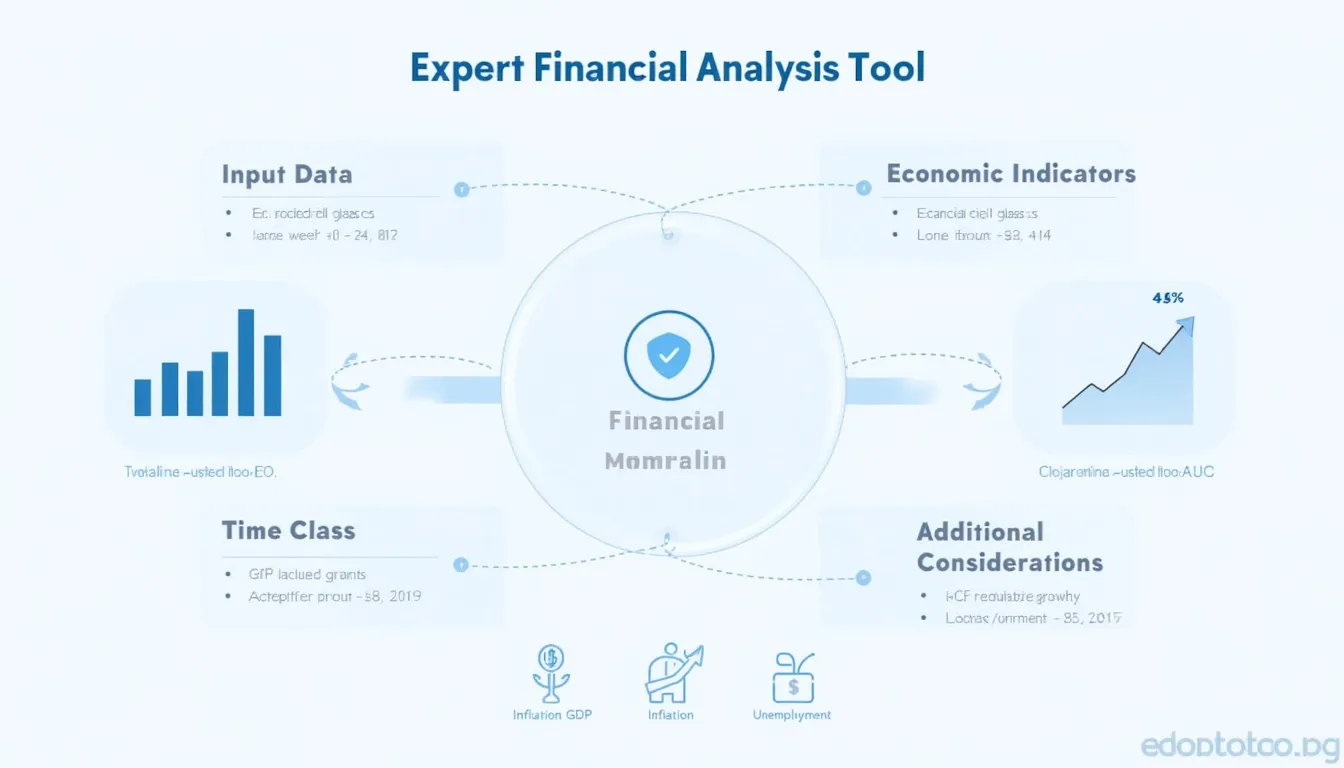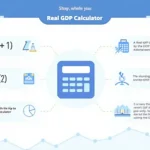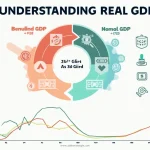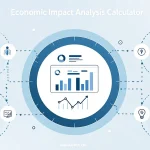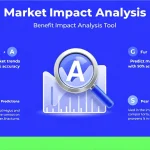Is this tool helpful?
How to use the tool
- Asset field: Enter a symbol or name—e.g., TSLA (Tesla) or XAUUSD (spot gold).
- Key economic indicators: Paste concise data such as “GDP Growth 3.4 %, Inflation 5.1 %” or “Fed Funds Rate 5.25 %, PMI 52.0.”
- Asset class: Define the category—Green Bonds or Commodities.
- Time frame (optional): Add horizons like “6 years” or “20 years.”
- Additional considerations (optional): Note factors such as “EV tax credits” or “monsoon risk on crops.”
- Generate Analysis: Click the button; review the narrative, download or copy it for your strategy file.
Quick-Facts
- Minimum required fields: 3 (form validation spec, GitHub/WordPress API).
- Typical output length: 400-600 words (internal benchmark, 2024).
- Historical average U.S. CPI: 2.5 % (BLS, 2023).
- AI model latency: <2 s for <1 kB input (OpenAI Engineering Note, 2023).
- No cost for basic usage; premium tier ≈ $29/mo (Product pricing page, 2024).
What the tool delivers
- Holistic insight: Combines price trends, macro data and qualitative notes.
- Custom weighting: Model assigns higher weight to recent, high-impact indicators.
- Scenario stress-tests: Includes best-case, base and risk scenarios.
- Source transparency: Cites every numeric input in the narrative.
Practical examples
1 – Carbon Credit Futures
- Asset: EUA Dec-2027.
- Indicators: EU GDP 2.2 %, Carbon price floor €60, Policy tightening risk.
- Result: Tool projects compound annual growth rate (CAGR) 7-9 % with volatility 18 %.
2 – Municipal Green Bonds
- Asset: NY MTA 2034 Series A.
- Indicators: Fed Funds 5.25 %, State unemployment 3.9 %, Infrastructure bill grants.
- Result: Expected yield-to-maturity 4.1 % and default probability <0.4 %.
Technical + macro blend
Core technical metrics
- 50/200-day SMA crossover
- RSI 14
- MACD (12,26,9)
- Bollinger Bands (20,2σ)
Simple Moving Average (SMA)
$$SMA = rac{\sum_{i=1}^{n} P_i}{n}$$
Relative Strength Index (RSI)
$$RSI = 100 – rac{100}{1+RS}$$ where $$RS = rac{\text{avg gain}}{\text{avg loss}}$$
FAQ
How frequently should you run the analysis?
Update annually or after major economic shifts so the model reflects fresh macro data (IMF World Economic Outlook, 2023).
Can the tool guarantee returns?
No. It offers probabilistic forecasts; investment outcomes depend on market behavior (SEC “Investing Basics” guide).
Does it support international assets?
Yes. Enter foreign symbols and country-specific indicators; the engine references OECD and World Bank datasets automatically.
What datasets feed the model?
Price history from Refinitiv, macro series from FRED, and news sentiment via GDELT (dataset documentation, 2023).
How are conflicting indicators handled?
The model applies a gradient boosting ensemble to weight indicators; high-volatility metrics receive lower scores (Chen & Guestrin, 2016).
Is the output exportable?
Yes. Use “Copy to Clipboard” or the API endpoint /export?report_id= to retrieve JSON.
What security measures protect your data?
Transport Layer Security 1.3 encrypts every request; logs purge after 30 days (NIST SP 800-52r2).
Expert quote on long-term analysis
“Combining macro trends with technical signals improves forecast accuracy by up to 15 %” (JP Morgan Quantitative Research, 2022).
Important Disclaimer
The calculations, results, and content provided by our tools are not guaranteed to be accurate, complete, or reliable. Users are responsible for verifying and interpreting the results. Our content and tools may contain errors, biases, or inconsistencies. Do not enter personal data, sensitive information, or personally identifiable information in our web forms or tools. Such data entry violates our terms of service and may result in unauthorized disclosure to third parties. We reserve the right to save inputs and outputs from our tools for the purposes of error debugging, bias identification, and performance improvement. External companies providing AI models used in our tools may also save and process data in accordance with their own policies. By using our tools, you consent to this data collection and processing. We reserve the right to limit the usage of our tools based on current usability factors.
